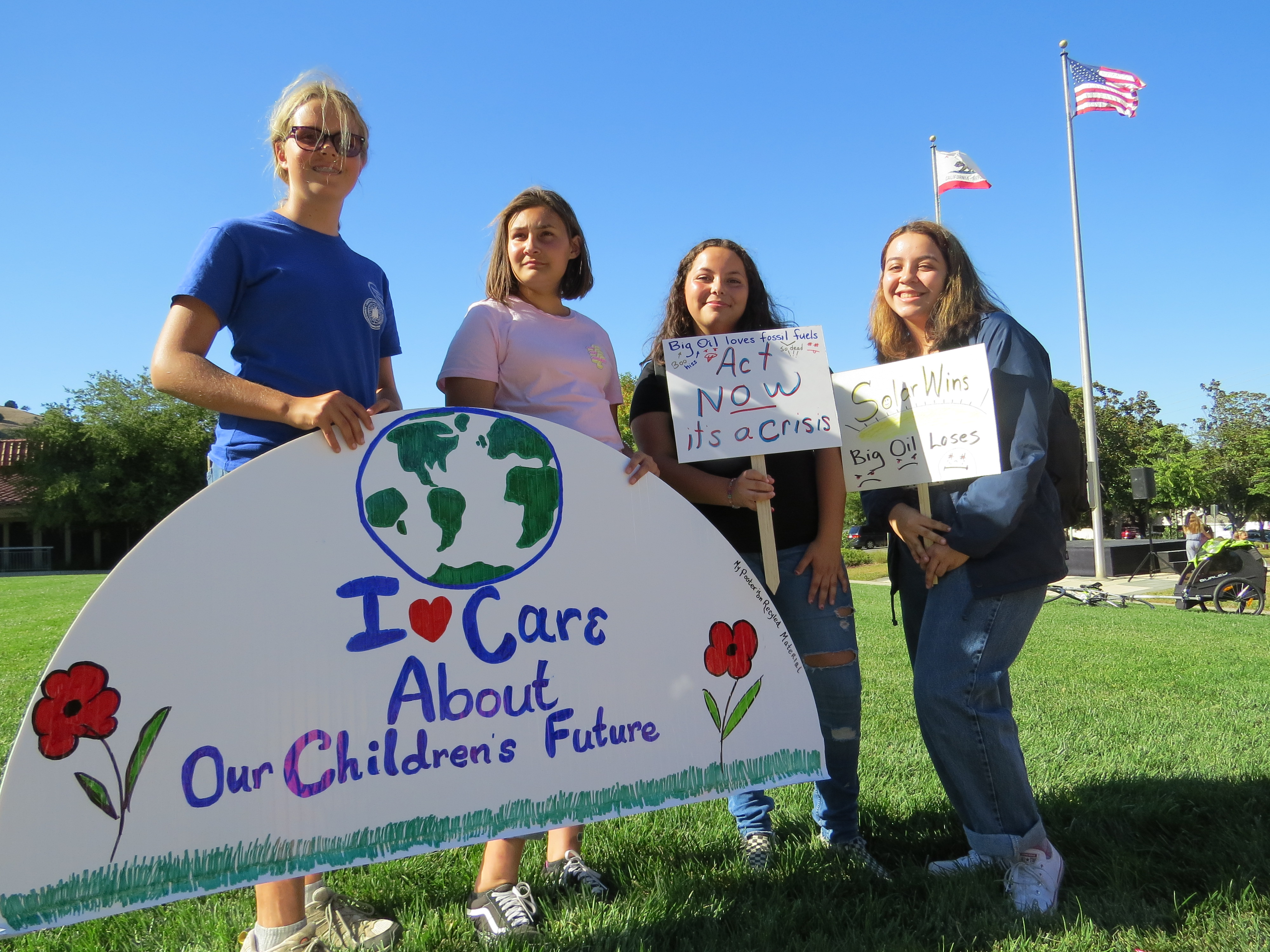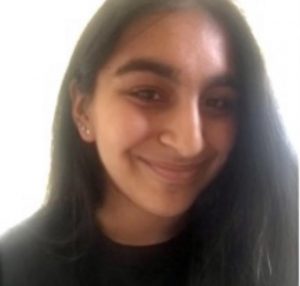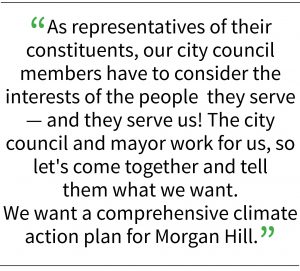“Our local climate is changing before our eyes. If we aren’t doing anything about it, then we are part of the problem.”

Photo by Marty Cheek
From left to right, students Nicki Kantor and Riley Barela, of San Martin Gwinn; and Sofia Ramirez and Bella Ramirez, of Sobrato High School at the Sept. 20, 2019 rally for climate change action at the city hall plaza.
By Diya Kandhra

Diya Kandhra
It isn’t fair that another Earth Day has come and gone without much being accomplished. It isn’t fair that a handful of industries are responsible for a majority of the world’s carbon emissions and that we all have to bear its brunt.
And it certainly isn’t fair that irreversible damage on our planet will happen in the next 30 years, before my 50th birthday — leaving my generation having, literally, the weight of the world on our shoulders. And to think, we could have averted this climate crisis 50 years ago . . . So what are we going to do about it?
 We can all testify to the anxiety and fear that filled our hearts this past summer and fall when wildfires approached our town from every direction. At first, I could not believe how rapidly they approached. The wildfires were no longer limited to distant cities like Paradise, as there were now ash particles, some the size of my fingernails, flying and settling on my backyard lawn.
We can all testify to the anxiety and fear that filled our hearts this past summer and fall when wildfires approached our town from every direction. At first, I could not believe how rapidly they approached. The wildfires were no longer limited to distant cities like Paradise, as there were now ash particles, some the size of my fingernails, flying and settling on my backyard lawn.
It was the first week of my junior year in high school, and instead of thinking only about classes and seeing friends online, I was preoccupied with what small keepsakes I could fit in my evacuation bag, which was packed ready at the door.
I remember waking up bright and early in September — and convincing myself that I must have still been dreaming — because instead of chirping birds and sunshine, I was faced with a sinister, scarlet sky with a dooming promise of ferocious fires to come. And indeed, the 2020 wildfires got way too close for comfort in Morgan Hill.
My best friend who lives in the East Dunne Avenue area was evacuated for a week. But after she and the other evacuees returned, and the smoky air stopped suffocating our lungs, life returned to normal as if we hadn’t just survived three months of terror.
 Our local climate is changing before our eyes. If we aren’t doing anything about it, then we are part of the problem. A climate action plan (CAP) provides a unique, comprehensive solution to keep Morgan Hill sustainable.
Our local climate is changing before our eyes. If we aren’t doing anything about it, then we are part of the problem. A climate action plan (CAP) provides a unique, comprehensive solution to keep Morgan Hill sustainable.
Obviously, our locally-emitted greenhouse gases won’t be reduced by just focusing on a single issue, like transportation, water conservation, or energy use. We need to bundle our efforts toward all of these sectors in order for there to be any significant impact.
In addition to several environmental focuses, a climate action plan includes time-relevant goals and delegated task forces in order to keep the city accountable to our sustainability goals.
 So let’s give the Morgan Hill City Council the gentle push they need — you can keep the idea of a CAP alive in our councilmembers’ minds by advocating for it in a short public comment at an upcoming Wednesday night city council meeting, or by sharing your thoughts on your social media feeds.
So let’s give the Morgan Hill City Council the gentle push they need — you can keep the idea of a CAP alive in our councilmembers’ minds by advocating for it in a short public comment at an upcoming Wednesday night city council meeting, or by sharing your thoughts on your social media feeds.
And beyond advocacy, if a CAP were to pass, you could help advise on particular solutions.
Menlo Park is a stellar example of a city that is dreaming big and using citizen input to shape their commitments. With the recommendations of the citizen-comprised Environmental Quality Commission, 77 environmental priorities were narrowed down to three that were approved by the city council — amounting to one incredible aim for Menlo Park to go carbon neutral by 2030. Clearly, costly consultants and city resources could be mitigated if we all get involved in the process of committing to our climate with a climate action plan.
As representatives of their constituents, our city council members have to consider the interests of the people they serve — and they serve us! The city council and mayor work for us, so let’s come together and tell them what we want.
We want a comprehensive climate action plan for Morgan Hill.
Other small Bay Area cities have one, including Watsonville, Santa Cruz, and Los Gatos. If they can do it, we can do it .
Let’s put our voices together and demand action to accomplish incredible things for Mother Earth. She certainly deserves more than one day a year.
Diya Kandhra is a junior at Ann Sobrato High School and a three-year member of AAUW’s Young Women Leaders.






